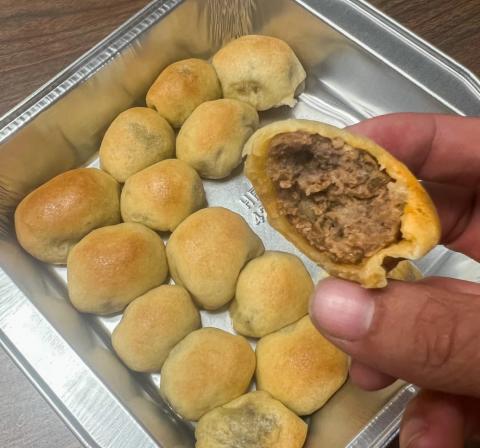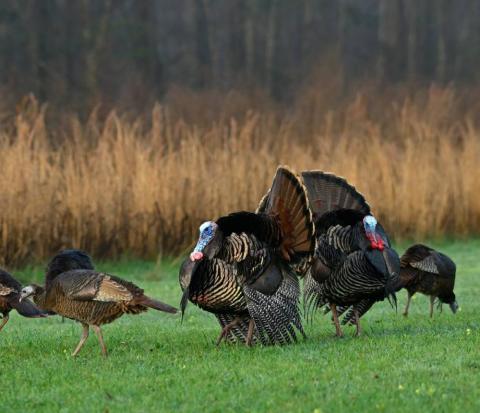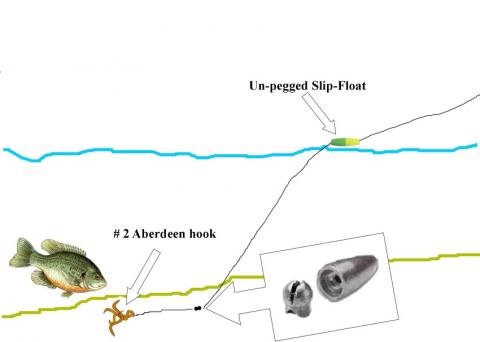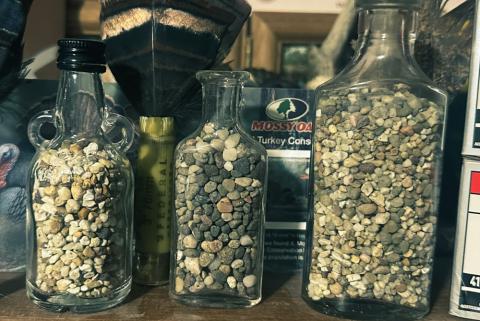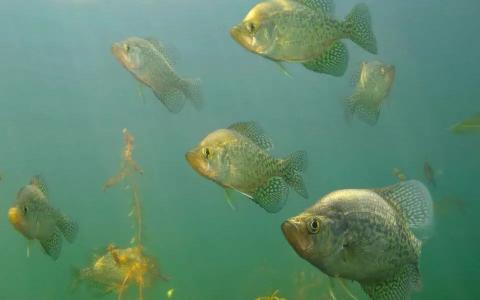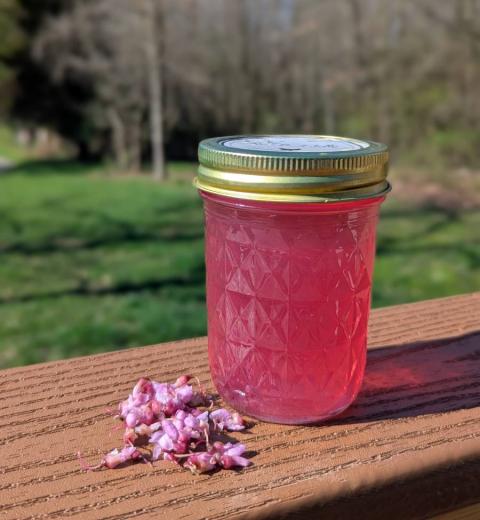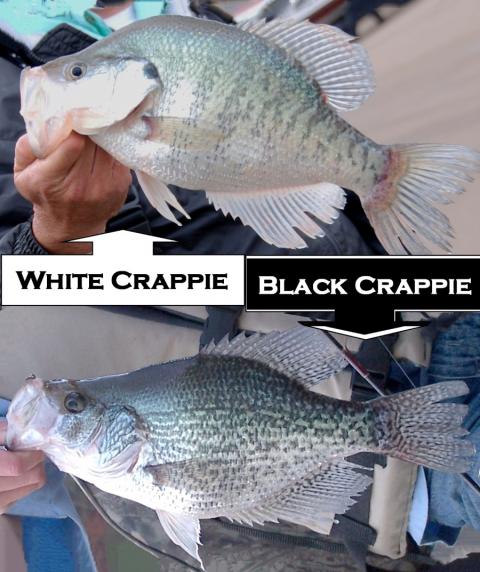Todd Amenrud
Everybody who knows me (well) recognizes my passion for managing wildlife, especially whitetails. But they also know my enthusiasm for hunting them — especially whitetails. For many, if not most of us gamekeepers, hunting whitetails was the birth of our enthusiasm for managing them. Deer hunters and gamekeepers know the challenges that hunters face in the late season. Savvy hunters can harvest a mature buck long after the rut. The following are three late season deer hunting tactics that you can use to put meat in the freezer or antlers on the wall.
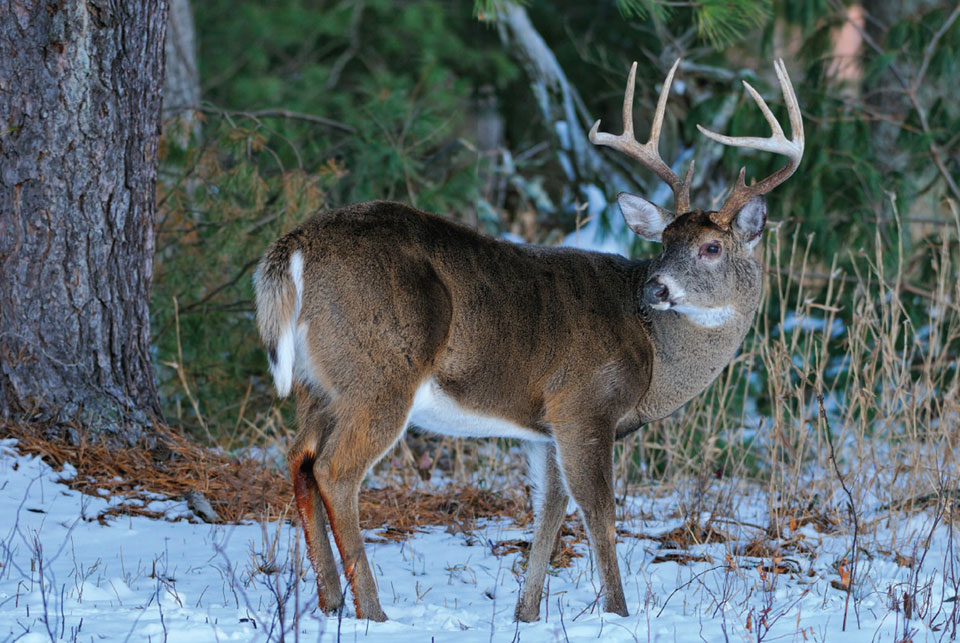
Slaves to Their Stomach
I’ve always loved late season bow hunting. The challenge of bow hunting after the rut appealed to me, and I used to enjoy getting on a fresh track and moving in close enough for a shot with my recurve. Historically, in Minnesota, it’s when we have a good tracking snow and our gun season has finished that whitetails can shift back into some sort of predictable pattern. Back during the late ’70s and early ’80s, if I could stalk close enough for a shot with my recurve, any deer would do. My challenges have changed, and I’m no longer athletic enough to sneak like a ninja. I still love late season deer hunting, but now for a different reason.
“Wintry Whitetails,” “Bucks at the Buzzer,” “Bitter Cold Bucks” — what do you title an article about hunting late season whitetails when late season is a term relative to where you are geographically? My late season in Minnesota would be roughly from late November through December 30, but for my friends in the Deep South, it’s more like December through February. Some states in the transitional zone, like West Virginia, are extending their season(s), and West Virginia actually added a new season for primitive weapons. So late season is relative to your geographic position and to when your state chooses to convene their chosen period dates. I know you’re thinking: “Sure Todd, you work for a company that makes food plot seeds. You have to say something about it.” But this is fact! One of my mentors always said, “Bucks become slaves to their stomachs during late season.” I’ve heard him repeat it so many times. It’s the same way I describe it. All whitetails need to “bank” fat and nutrients if they are to make it through the winter, especially in northern climes. Now, factor into it the variety that bucks lose a great portion of their banked energy during the rut — some suffer the loss of 25 percent or more of their body weight. And during this time, along my latitude in the good ol’ USA, we go from breeding straight into winter.
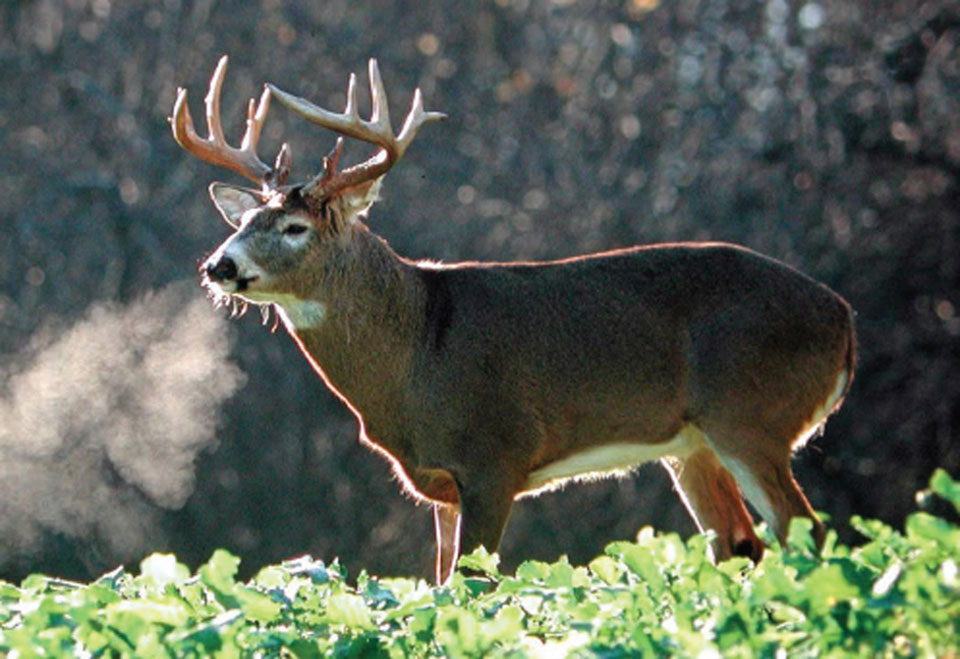
If we have snow, I’ll place my money on brassicas, corn and sometimes dried soybeans or sorghum. Obviously, with snow, it first and foremost must be accessible. However, with no snow or if we have less than six inches or so, they may be on cereals, acorns, browse or numerous other options. When cold temperatures arrive, carbohydrates are more important because they mean heat generation for the deer.
Deer do not have a wide variety of food sources to choose from in the late season. After the rut is over in many areas, food supplies become limited. Knowing what deer in your area prefer when you have snow versus what they prefer when you don’t have snow is vital. It can be the information you need for late-season deer hunting to harvest a mature buck.
IF YOU LOVE WILDLIFE AND WANT TO IMPROVE HABITAT, SUBSCRIBE TODAY!
Is It Real or Just a Great Deception?
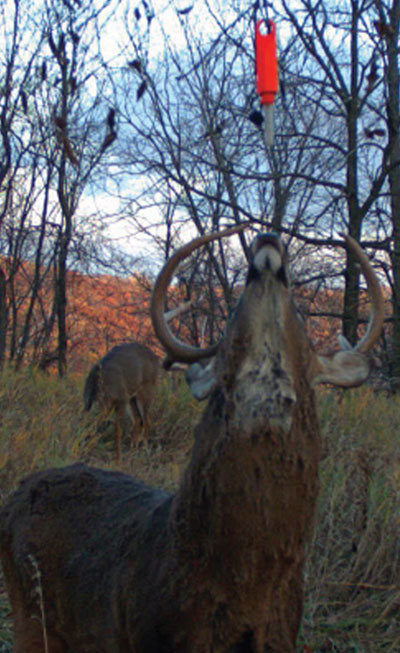 What makes a situation seem real to you? For humans, our most reliable confirmation comes from our sight. After all, “You’ve got to see it to believe it.” For whitetails, as you may have guessed, it’s their sense of smell that is trusted the most. However, for any species, “the more senses you satisfy, the faster the circumstances become reality.” I love using scent, calling, decoys and other sometimes off-the-wall tactics from time to time. It keeps hunting exciting and once a tactic is learned, you can add it to your bag of tricks and at the end of the season, sometimes as a last hurrah, I like to open that bag.
What makes a situation seem real to you? For humans, our most reliable confirmation comes from our sight. After all, “You’ve got to see it to believe it.” For whitetails, as you may have guessed, it’s their sense of smell that is trusted the most. However, for any species, “the more senses you satisfy, the faster the circumstances become reality.” I love using scent, calling, decoys and other sometimes off-the-wall tactics from time to time. It keeps hunting exciting and once a tactic is learned, you can add it to your bag of tricks and at the end of the season, sometimes as a last hurrah, I like to open that bag.
I believe in calling and rattling, using decoys and other visual tricks, the use of commercial deer scent and all while at the same time reducing foreign odor to miniscule trace levels that even mature bucks will tolerate in close proximity.
Each of the tactics mentioned above will work when used individually; however, used together, each can “feed” the scenario. Let’s say a buck hears your rattling and pops out of cover across a large food plots. But when he gets there, he sees your (small buck) decoy so he lays his ears back and begins doing an aggressive, stiff-legged walk across the plot towards your decoy. The decoy was a definite motivation for the buck to close the distance. But when he gets close, he becomes unsure. So he swings downwind to scent-check the situation, but when he does, he smells the scent you placed out crosswind from you. Obviously, you must use a scent that confirms the specific scenario you’re trying to portray, but each element adds another level of confirmation.
I mentioned off-the-wall tactics. I’ve had success because of the types of gloves I used to wear. It gets cold here, so I used to wear wool gloves (not mitts) that have a light color that’s pretty close to a deer’s tail. Once I harvested a doe that I, for lack of a better term, “flagged” to me by hiding my body behind a tree and swishing my wool gloves like one of their tails. A tail wag means so much more in the whitetail world than most hunters realize.
The above was fun, but the closer for my glove’s highlight reel would be a time approaching my treestand and a doe and fawn busted me about 75 yards out. They were directly under my treestand. Once they sounded the alarm, I saw the buck I was after (a perfect 154-inch 5x5 with less than two inches of deductions) stand up about 200 yards away. Cautiously ducking behind a tree, I began to loudly make a snort back at the doe. Then, several times, I would flick my hand out from behind the tree, swish it three times and pull it back. It calmed the other deer back down so the doe and fawn resumed feeding and the buck looked like he walked a small circle and bedded back down close to where he was. They must have thought I was another deer that made the noise or movement that originally alerted them. I waited for the doe and fawn to move off, snuck into my treestand and right about sundown, arrowed the buck at 28 yards.
After the rut, it often takes an out-of-the-box approach to take a mature buck. This time of the year, your strategy may combine several tried-and-true tactics, especially when you combine tactics that you have used successfully. Incorporating multiple tactics into a single strategy over a food plot can deceive even the wariest of whitetail.
Pushin’ Bush
What I’m going to pick as my last go-to tactic may surprise some who know me and understand how hyper-careful I am to prevent ANY disturbance to the whitetails on my property during the hunting season. I’ve heard deer drives referred to by different names over the years: bumpin’ bucks, flushing flags and steering deer. But my favorite is something I learned many years ago from my friends in Manitoba, Canada. There, they don’t call it the woods, forest or timber — it’s “the bush.” And they call deer drives, pushin’ bush. I still chuckle at that.
While I do not begrudge people who make deer drives, I’m not a big fan of the “scare them out the other end” type of drive. However, as long as people abide by local laws, have at it. My form is not meant to get the deer up and running out of the timber at 30 mph. We just want to nudge them in the direction of an occupied ambush location. You want them walking past one of your hunters looking over their back for what may or may not be following them. Especially with archery gear, the last thing you want is to have to attempt a fast-moving shot.
BECOMING A GAMEKEEPER IS NOT JUST THE BEST WAY TO PRODUCE GREAT HUNTING… IT’S THE BEST LIFE! SUBSCRIBE TODAY.
When I first began hunting, one of my grandfathers was a fan of the “blowing whistles, banging pots and pans” type drive. He would say, “You’ve got to get ’em up and moving!” But more often than not, the deer hear you, smell you or see you and either hunker-down and wait for you to walk by, sneak out the side or circle around you. Sure, some get killed, but if you do a few things correctly, success can skyrocket.
You could call this a still-hunt-style push. We’re not trying to scare the animals out of their hides. We just want to get them up and moving during legal hunting light and have a chance at a high-quality opportunity. In fact, sometimes the people doing the drive actually get the shooting (I mean with archery, but it really doesn’t matter). I typically use this tactic at the end of the season if other options have failed or in situations where it may be tough to hunt like standing corn, swamps, some scrub areas, etc.
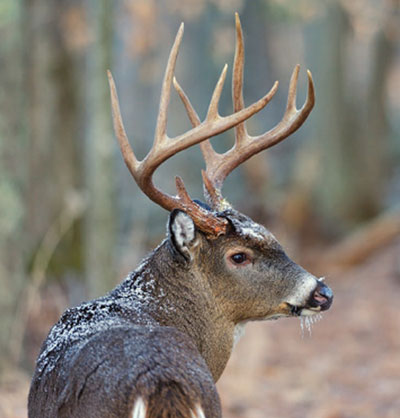 You must scrutinize an aerial view of the intended area. Funnels are the first thing to look for because they help to create high-quality shot opportunities. In a bottle-neck situation, most of the time you can find an ambush point that will put you downwind of where the animals will pass. Anywhere you can restrict their movement to a smaller zone first, typically more animals will pass by the location, but it’s also easier to position yourself within that zone because their movements are limited.
You must scrutinize an aerial view of the intended area. Funnels are the first thing to look for because they help to create high-quality shot opportunities. In a bottle-neck situation, most of the time you can find an ambush point that will put you downwind of where the animals will pass. Anywhere you can restrict their movement to a smaller zone first, typically more animals will pass by the location, but it’s also easier to position yourself within that zone because their movements are limited.
Watch for patterns. If you make the push once, document the conditions and watch which escape routes the animals use. When you have the same conditions, expect them to use the same escape path – it worked before. The first time or two you make the push, use your cameras to cover possible escape ways you can’t physically cover.
Please don’t overdo it! Keep in mind that a mature buck has already endured hunting pressure in the late season. Too much stress and a mature buck may relocate. He probably won’t be too far away, but he’ll change something to avert making contact with you. We typically limit it to two to four times during the season per area, and some areas are always off-limits.
You’ll often notice that mature bucks act differently in these situations. The job of the mature does is to protect the herd. They will snort, stomp the ground and bounce away with their “flags” raised claiming “danger, danger” to the rest of the herd. Some bucks may also act this way, but his job is simple — he just needs to protect himself. You’ll often see females and young bucks go bouncing away with their tails waving goodbye, while mature bucks tuck-tail and sneak out the back way or duck down and smell for you to pass by.
Most often, you simply won’t be able to cover all of the escape routes. Again, use your cameras to cover alternate flight paths. If you need to block a route, take a light hanky or ribbon and tie it in an obvious blocking location about five feet off the ground. Then, take one of your regular jackets and hang it nearby about body height on a branch or fence post. And I’m not talking about your hunting coat that you washed and treated with Scent Killer. I’m talking about the one you wore to the restaurant last night. You want these shams to prevent deer from traveling here — and if they don’t see it, they’ll likely smell this blockade.
My father was somehow especially good at making these still-hunt-style pushes, particularly if we had snow and he could follow a track. Sometimes, he would bring his bow, sometimes not. He just liked to see me have the opportunity. He steered so many deer past me while I was posting that I could never recount them all, most of them walking slowly, stopping to test the wind and check their back-trail — perfect harvest opportunities.
Late season deer hunting is more challenging than hunting the rut, especially when it’s a late season archery season. Don’t be afraid to hunt over a food plot in the late season. Mature bucks will be searching for green food sources. Don’t be afraid to think out of the box when trying to lure a big bucks within bow range. It may take a decoy, deer scent and a rattling bag to pull a whitetail within bow range. Lastly, don’t be afraid to push bush. The late season is an excellent time to conduct a still-hunt-style push. These three tactics are proven to put a late season deer in the freezer and antlers on the wall.















